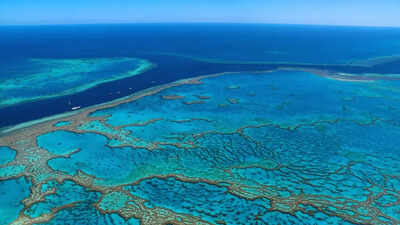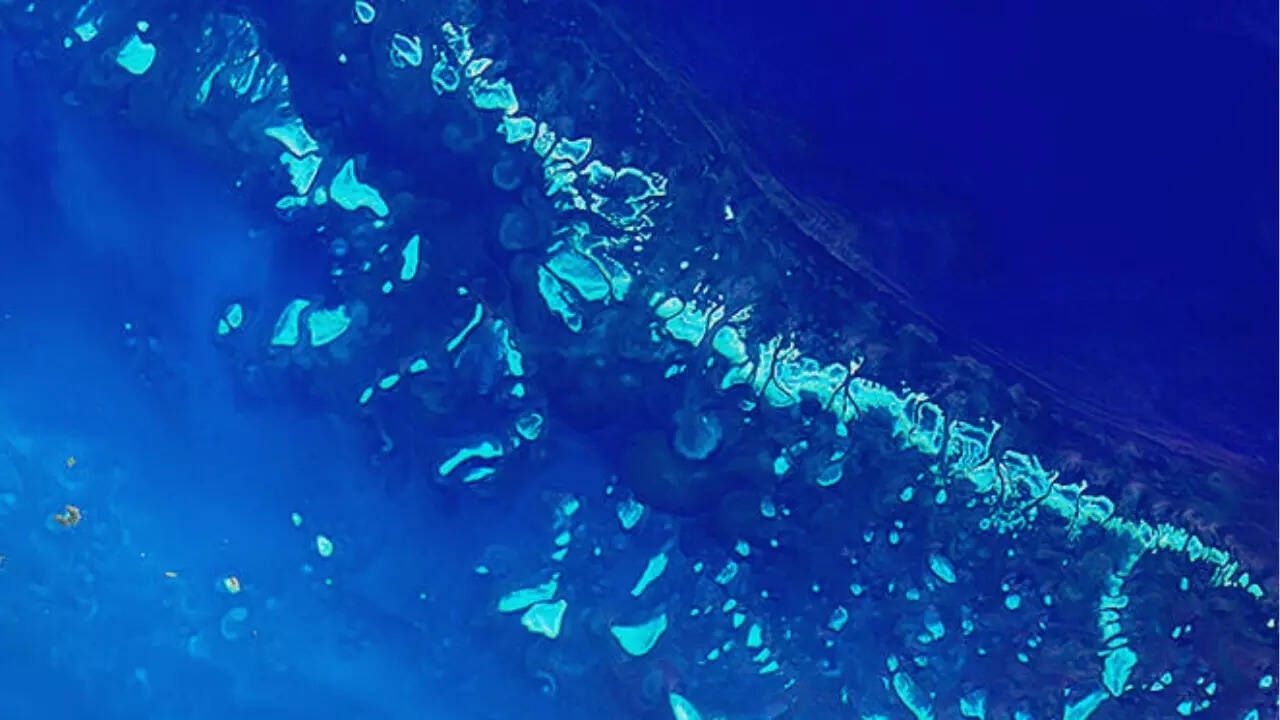ARTICLE AD BOX

The Great Barrier Reef in Australia
Stretching magnificently along Australia’s northeastern coastline, the Great Barrier Reef is not just a natural marvel, it is also one of the planet’s most extraordinary living systems.
The Great Barrier Reef, a UNESCO World Heritage Site, is so big that it is even visible from outer space.Located off the coast of Queensland, the Great Barrier Reef is the world’s largest coral reef system. It spans more than 2,300 kilometres and covers an area of approximately 344,400 square kilometres, larger than the entire country of Italy. This immense scale is what makes it the only living structure on Earth visible from space.Fun fact: Did you know that the Great Wall of China is often mistakenly believed to be visible from space? It’s not true though.

UNESCO World Heritage status
The Great Barrier Reef was inscribed as a UNESCO World Heritage Site in 1981, because of its exceptional universal value. UNESCO describes it as “one of the most extensive and spectacular ecosystems in the world,” featuring about 2,900 individual reefs and around 900 islands.The site fulfills several UNESCO criteria for natural heritage:
- It contains superlative natural phenomena and areas of exceptional beauty.
- It represents major stages in Earth’s evolutionary history.
- It provides significant ongoing ecological and biological processes.
It supports the most diverse range of marine species anywhere on the planet.
Because of its immense ecological, aesthetic, and scientific value, the reef is not only a symbol of Australia’s natural heritage but also a global icon of environmental preservation. Now that the Great Barrier Reef ticks all the necessary boxes, let’s explore its diverse ecosystem.
- The Great Barrier Reef is a living mosaic teeming with biodiversity. It is home to over 1,500 species of fish, 400 species of hard and soft corals, 4,000 species of mollusks, and six of the world’s seven species of marine turtles. It also supports populations of whales, dolphins, dugongs, seabirds, and rays. You name it, the Great Barrier Reef’s got them all.
- The reef’s coral polyps, the tiny, soft-bodied organisms that build the limestone skeletons forming the reef’s foundation, have been thriving for millions of years. Together, they have created an underwater world that scientists often call the “rainforest of the sea.”
- The reef also provides crucial ecosystem services like being a natural barrier, protecting Australia’s northeastern coast from tropical storms and erosion. It supports commercial fisheries, generates oxygen, and absorbs carbon dioxide. To put in simpler terms, the reef plays a vital role in maintaining the planet’s environmental balance.

Great Barrier Reef as seen from space. Photo credit: NOAA (National Oceanic and Atmospherical Administration)
Among all UNESCO World Heritage Sites, the Great Barrier Reef holds the rare distinction of being visible from space. The bright blues and greens of the reef’s lagoons and coral cays create a striking visual difference from the surrounding dark blue of the deep ocean.
This phenomenon has made the Great Barrier Reef not only a geological and ecological marvel but also a remarkable visual symbol of Earth’s living beauty.
Why is this a must-visit destination for travellers?
1. World-class snorkeling and diving
The reef offers some of the most spectacular snorkeling and scuba diving experiences in the world. Popular departure points such as Cairns, Port Douglas, Airlie Beach, and the Whitsundays provide access to vibrant coral gardens, colourful fish, and marine creatures that seem straight out of a nature documentary.
Sites like Agincourt Reef, Hardy Reef, and the Outer Barrier Reef boast crystal-clear visibility.
For first-timers, shallow coral lagoons near Green Island or Fitzroy Island offer easy and safe access to marine life.
2. Scenic flights and sailing adventures
Because of its immense scale, the reef is stunning when viewed from above. Scenic helicopter or seaplane tours reveal its patchwork of blues, greens, and sandbanks. The Heart Reef near the Whitsundays is a sight to behold.
Those who prefer a slower pace can embark on luxury cruises or sailing trips across the islands.
3. Island escapes and eco-lodges
The Great Barrier Reef is dotted with tropical islands, many offering eco-friendly resorts and nature retreats. Hamilton Island, Lizard Island, and Heron Island are among the most sought-after destinations for travellers seeking both comfort and proximity to nature.

Marine life, Great Barrier Reef
Despite its grandeur, the Great Barrier Reef faces grave threats from climate change, coral bleaching, ocean acidification, and pollution.
Rising sea temperatures have led to widespread coral bleaching events, notably in 2016, 2017, and 2020, which affected large sections of the reef.In response, Australia has taken significant steps to protect the reef. Programs like the Reef 2050 Plan and Reef Restoration and Adaptation Program aim to ensure the reef’s long-term survival through coral nurseries, water quality improvements, and community engagement.Visiting the reef is more than just a travel experience. Whether seen from a boat, beneath the waves, or even from space, it leaves visitors with a deep sense of wonder and responsibility toward environmental preservation.

 1 hour ago
5
1 hour ago
5









 English (US) ·
English (US) ·